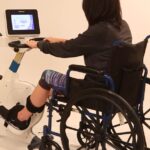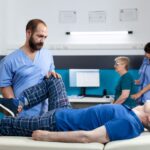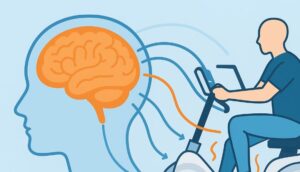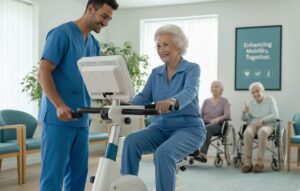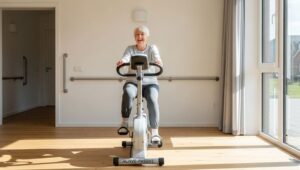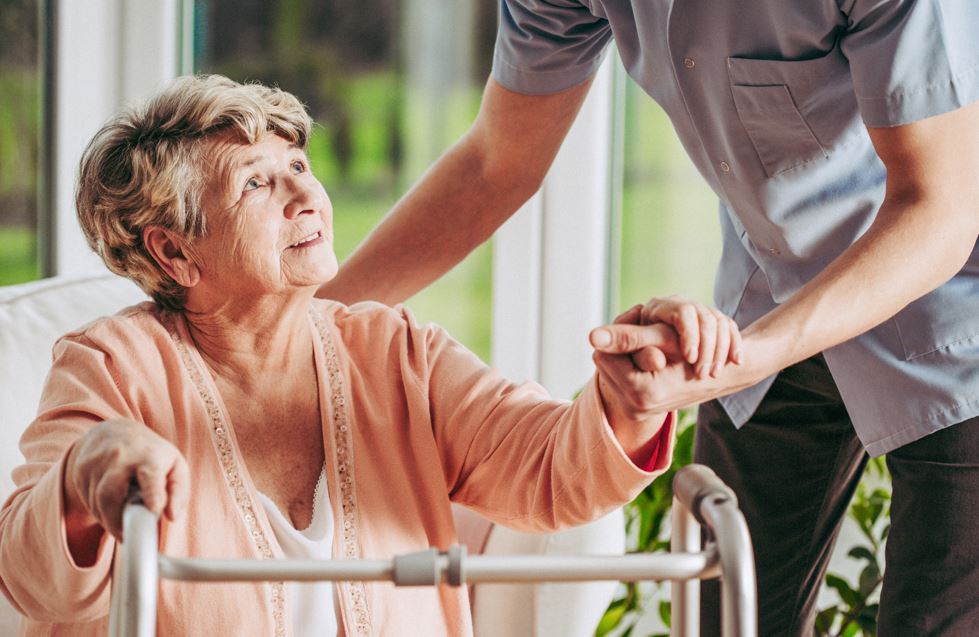
For people with Alzheimer’s disease and dementia, maintaining daily physical activity is an important part of managing the progression of the disease. However, as the effects of the disease do progress, it can become more difficult to keep up with a routine that gets them active. When taking part in traditional activities becomes more difficult, using an active passive cycle as part of their therapy can help to slow down the negative effects that come with an Alzheimer’s or dementia diagnosis.
Alzheimer’s and dementia: Are they the same thing?
Alzheimer’s disease is a neurological disorder that gets progressively more severe over time. It is usually characterized by memory loss, agitation, anxiousness, a lack of balance, incoordination, bowel and bladder problems and often depression.
Dementia isn’t a specific disease on its own, it’s more of general term used to categorize the reduced ability to remember, think and make day to day decisions. Alzheimer’s disease is one of the most common kinds of dementia, however it’s not the only one. Dementia symptoms can vary quite a bit from one person to the next however many will have problems with short-term memory, paying attention, remembering the correct words, misplacing objects and feeling disoriented.
Physical exercise is beneficial for dementia and Alzheimer’s patients
Physical exercise has been shown in many studies to have a positive effect in the treatment and prevention of dementia and Alzheimer’s. Not only does it help maintain brain efficiency and size, it can also help prevent against common Alzheimer’s disease by-products like stroke, obesity and hypertension.
Physical activities like walking, running, biking, swimming and stretching have shown to slow down the progression of Alzheimer’s and dementia. All adults should aim to spend 30-60 minutes, 2 to 4 times a week performing some sort of physical exercise in order to help ward off and reduce the severity of these diseases.
Active passive cycling for Alzheimer’s patients

One of the easiest and most adaptable exercises for someone with decreasing mobility and balance is cycling. Although they may not be able to hop on a bicycle and head out for a ride, an at-home cycle trainer allows users to experience the same benefits.
An active passive cycle trainer can be easily used by those who can still move around independently as well an someone who is in a wheelchair or unable to move themselves around. It can be significant tool in helping aging adults maintain their health.
The MedUp V2 cycle trainer allows those with Alzheimer’s and dementia to exercise daily, whether they need the support of an active assist setting or are able to control the effort themselves. A simple activity like cycling is an ideal exercise for those with Alzheimer’s disease as they will be able to participate regardless of how cognitively present they are. Those with more advanced levels of dementia will be able to use the increased settings of active-assist and passive movement to maintain some regular physical activity.
The key to introducing activity to someone dealing with Alzheimer’s or dementia is to introduce it slowly and at a time when they are at their best mentally. Often patients will have strong cognition at a certain time of day, so that is the best time to incorporate the cycle trainer into their routine. Starting with just 5 or 10 minutes a day depending on their mobility level can help them warm up to the habit both physically and mentally.
Benefits of physical activity for Alzheimer’s patients
Physical activity is beneficial for people of any age and fitness level, however it’s especially important for Alzheimer’s patients and those suffering from dementia. There are many direct benefits that they are likely to experience including:
- Improved heart health which can reduce the risk of heart disease and high blood pressure
- Reduced risk of some cancers, stroke and diabetes
- Increased ability to perform regular daily activities like getting dressed, cooking, cleaning, and eating independently
- Improved bone health leading to a reduced risk of developing osteoporosis
- Improved physical fitness, leading to stronger muscles, more flexible joints and an increased opportunity for independence
- Improved brain health including better memory, reduced feelings of depression and an overall reduction in the rate of mental decline.
- Reduced likelihood of neurological deficits
- Increased confidence in their ability to carry on with their day-to-day lifestyle
- Better sleep
- Can help improve the behaviour of the patient, preventing situations where they may wander off, act aggressively or use aggressive language
Active passive trainers are the perfect tool
There have been countless studies done to examine the link between physical exercise and a person’s memory, especially later in life. The overwhelming results show that regular exercise can reduce the risk of dementia and Alzheimer’s by upwards of 45%. One of the easiest and most accessible methods of achieving this regular exercise is through the use of an active passive trainer. This at-home cycle machine is an excellent way to keep aging adults moving in order to help prevent, combat or cope with the changes brought on by Alzheimer’s disease.
